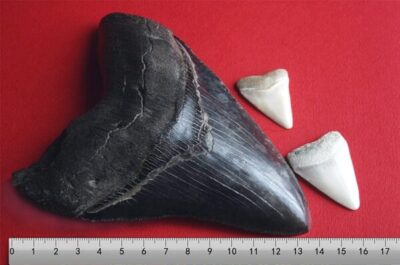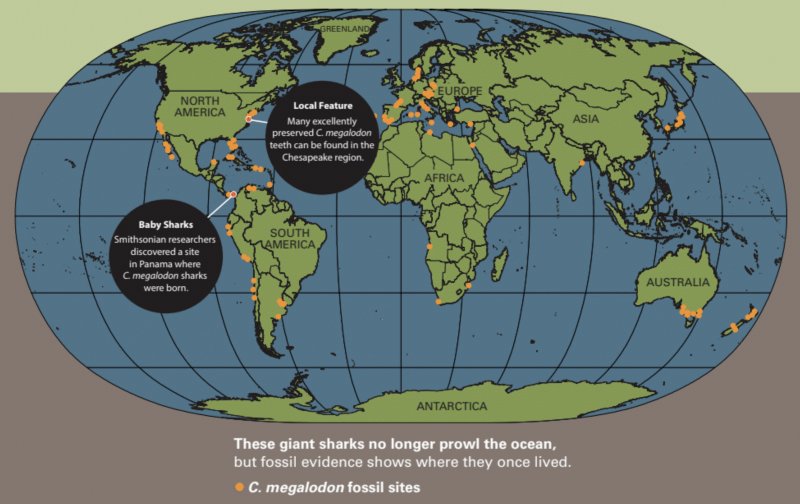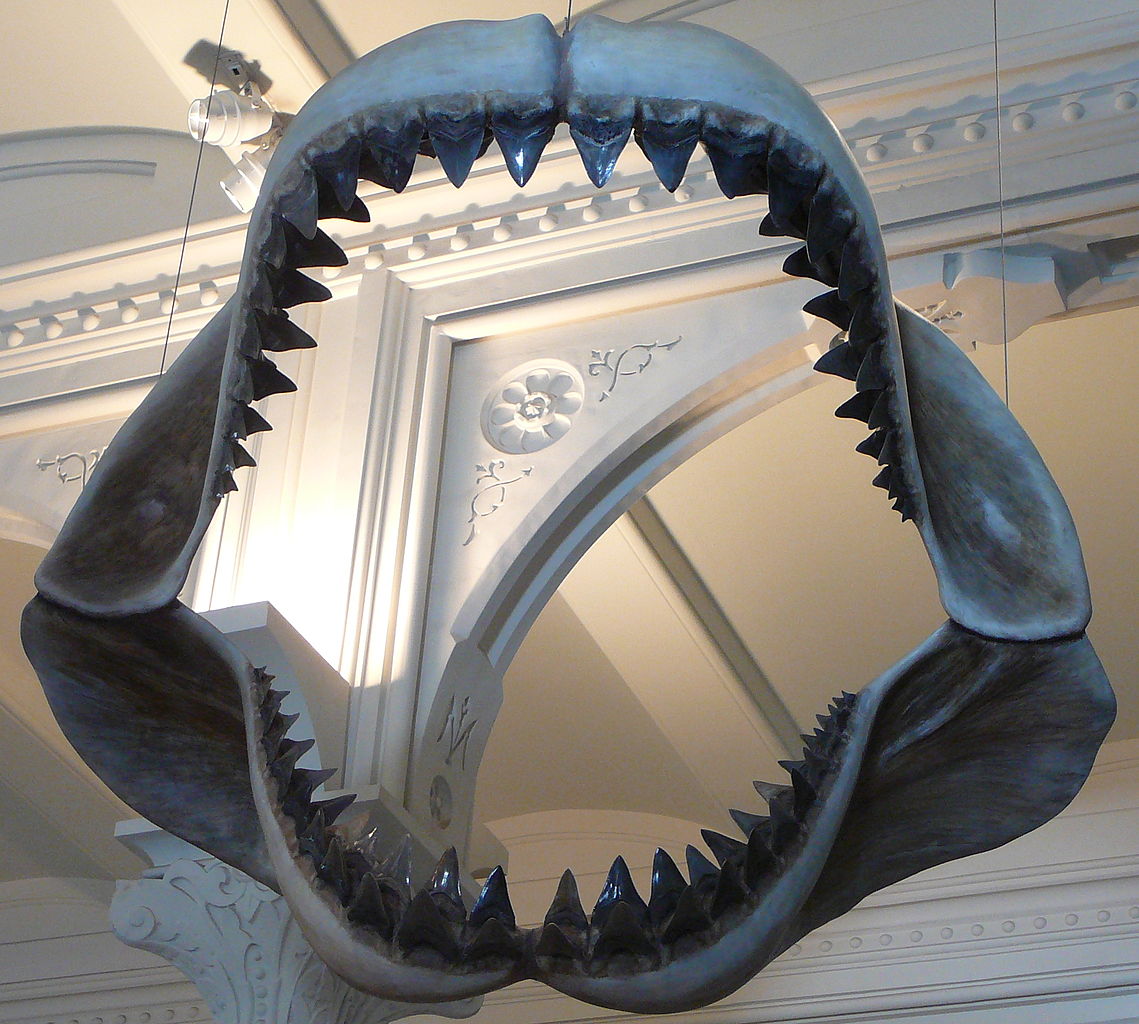7 Mega Wild Facts About the Megalodon
These facts about the largest shark to ever live will blow your mind

We’ve all heard of this mysterious, enormous shark: Otodus megalodon. But having been extinct for millions of years, how much do we really know about these massive, ancient sharks?
The answer, in short, is not a lot. But we do know a handful of things, and while scientists work to uncover more information about these mesmerizingly monstrous elasmobranchs, I’m here to tell you about some quick (yet jaw-dropping) facts about our legendary friend, the megalodon.
Megalodon was one of the largest fish the world has ever seen.
This massive shark was not only the largest shark to ever live, but also ranked as one of the biggest fish until the species went extinct. Megalodon was estimated to have grown up to 60 feet long: that’s around three times larger than your average great white shark! Today, the biggest fish in the sea are whale sharks. These filter feeders typically average in length between 18 and 32.5 feet. For a little added contrast, the maximum length of your average school bus measures approximately 45 feet. Yep: that’s a very big shark.
Contrary to popular media, it looked a bit different than just a giant great white.
Most modern depictions paint megalodon as looking much like a supersized great white shark, and much of that is due to the fact that scientists thought for quite some time that the great white and megalodon shared a common ancestor. Today, it’s believed that megalodon was actually the last species of a separate lineage of shark. In terms of its appearance, ways that it differs from your classic great white include a more compact jaw, longer pectoral fins, and a shorter nose, known as a rostrum.

The word “megalodon” actually means “large tooth”
The ‘large’ part is no joke either: these teeth grew up to seven inches long! Given the average overall size of these animals and the size of the prey they consumed (large megafauna like sharks, whales, etc.), the size of their teeth makes sense. If you want to see something truly mind-blowing, look up a photo of a great white’s tooth (which are already hefty) next to a megalodon’s. Talk about living up to its name, right?

Their fossils have been found all over the world.
The earliest of these fossils date back to about 20 million years ago, and it’s thought to have gone extinct a little more than 3 ½ million years ago. That’s an insanely long time as the largest shark in the sea, huh? You won’t find megalodon skeletons as fossils, because like those of modern sharks, they’re made of cartilage instead of bone. But we do have fossilized megalodon teeth, as they’re made of a hard calcified tissue called dentin.
Megalodon teeth are surprisingly common: like most sharks. are constantly lost teeth throughout the course of their life. Since megalodon swam freely in tropical and subtropical waters all over the globe, these fossils have been reported to have been found on every continent except Antarctica.

Their teeth and vertebrae aren’t all that’s been found, though… 💩
That’s right; scientists have apparently found petrified portions of their feces, too! One report from a site in South Carolina documents coprolites (the fancy science term for fossilized poo) of a large shark, the largest of which totaled around 5.5 inches long. I’m honestly not sure what else to say about that other than, well, it’s a certainly interesting story to tell next time you’re in South Carolina!
Put all those teeth together, and you have what’s calculated to be one of the most powerful bite forces in the world.
With a jaw estimated to measure about 9 x 11 feet, scientists have calculated that megalodon’s bite force would be about 40,000 pounds per square inch. Compare that to Tyrannosaurus rex, which had a bite force of 12,000 pounds per square inch, and it’s clear you’ve got a mighty bite on your hands. Still not convinced? Our bite force as humans averages just a bit more than 160 pounds per square inch. According to experts, that 40,000-pound bite force is the most powerful of any creature that has ever existed.

Though pop culture has certainly sparked rumors over the years, most of the experts don’t think megalodon is still alive today.
If you’ve ever seen the film The Meg, you know what I’m referring to. There are theories that have been spread through the grapevine that, hey, if 80% of our ocean still remains unexplored … how do we know for sure that this creature has actually gone extinct? Couldn’t it, perhaps, evade human detection in the deep sea? While certainly an intriguing and mind-boggling idea, the vast majority of scientists don’t believe this to be possible, mainly pointing to its size as the problem. Most of the megalodon’s potential prey live in shallower ocean zones where there’s lots of food to eat rather than the deep sea. If these animals were in fact alive, scientists say, there’s no way we wouldn’t have at least some idea of it.
And there you go: seven wild facts about one of the largest fish (and most legendary shark, in my opinion) to ever live. Who knows … perhaps a fossilized megalodon tooth could be found in your own backyard!